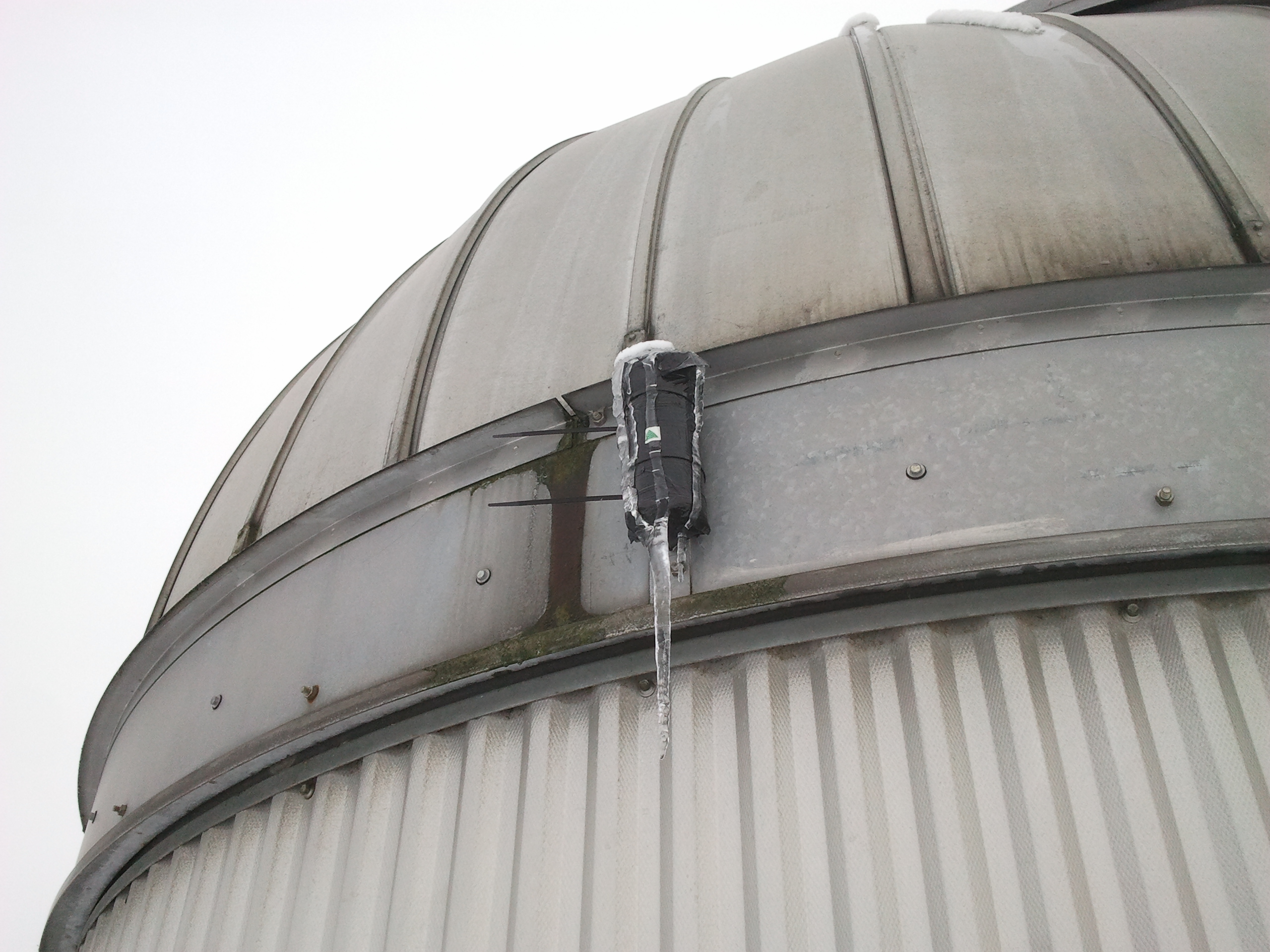A Photograph With an Eight-Year Exposure Was Taken With a Beer Can
A week after the 2012 London Olympics closing ceremony, a Master's student at the University of Hertfordshire placed a film-lined beer can on the side of a campus observatory and seemingly at some point forgot about it. Eight years later, in September 2020, there was a picture on the inside of the can with one of the longest exposure photographs ever taken.
Regina Valkenborgh was experimenting with pinhole camera techniques when she created this project, according to a University of Hertfordshire statement. She decided to build a simple, makeshift camera using a can to capture the rising and setting of the sun for an indeterminate length of time. It ended up sitting there for eight years-according to the university, 2,953 arced trails of the star were captured on the film inside of the can. This is believed to be the longest-exposure photograph taken.
To me the most exciting thing is that this rudimentary way of photographing in this technology-driven era still has value," Valkenborgh said in an email to Motherboard. Yet in all its simplicity it has the capability of capturing' a photograph way beyond the slowest shutter speed you can set on any digital camera. The images are also totally unique, the light photons travel through the actual pinhole and touch the paper inside the can. You can compare it with your footprint in the sand as opposed to drawing a foot with a stick. The foot actually touched the sand and likewise the sun's rays actually touched the paper."
Officially titled Days in the Sun," the image documents the sun's path in the Northern Hemisphere's sky. The highest arches coincide with the Summer Solstice (i.e. the longest day of the year), and as time goes on, the lowest ones indicate the Winter Solstice (the shortest day). Breaks in the light trails indicate cloudy days and saturated spots imply sunny ones.
It was a stroke of luck that the picture was left untouched," Valkenborgh said in a statement. I had tried this technique a couple of times at the Observatory before, but the photographs were often ruined by moisture and the photographic paper curled up. I hadn't intended to capture an exposure for this length of time and to my surprise, it had survived. It could be one of, if not the, longest exposures in existence."
 University of Hertfordshire
University of Hertfordshire Not only did the DIY camera withstand harsh weather conditions throughout the seasons, but also nosey humans and other animals. The camera was finally taken down (as planned) by the Observatory's Principal Technical officer, David Campbell.
As highlighted in an online tutorial for this type of photography, In today's world, people are easily alarmed by cylindrical objects taped to buildings, lampposts, etc." Still, the camera withstood the test of time.
The photograph was revealed on the Observatory's 50th anniversary year - having watched 16% of the observatory's existence, 12% of the reign of Queen Elizabeth II, and 4% of the existence of photography itself," a Tweet by the University of Hertfordshire Observatory account reads.
This type of image, where the sun is captured in a long exposure shot, is called a solargraph. To capture hers, Valkenborgh placed film paper on the inside of the beer can and used a micro-sized hole (typically created with a sewing needle) to create the camera's pinhole," which acts like a traditional camera's lens - hence the name, pinhole camera." The sun's light, concentrated by the pinhole, burned a trail on the film paper that lined the beer can.
I'm looking into how I can frame it, possibly behind special glass, to prevent the light from continuing the exposure of the silver halides in the paper," Valkenborgh said. A safe way of displaying would allow me to do a retrospective exhibition of all my previous pinholes which led to this one. They are connected and tell a larger story. I would like the original images to be seen as they are, together with the beer can cameras."
Before Valkenborgh's solargraph was discovered in the UK, the longest-known exposure shot was taken by German photographer Michael Wesely, who's famous for taking ultra-long, three-year exposure cityscapes.